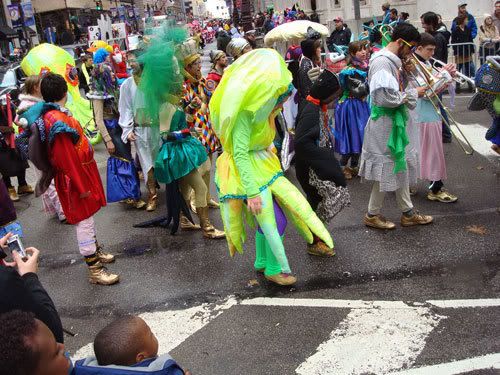So friends,
Around the shop lately (as in the past six months), we've been tossing around this idea. This idea about leather. See, much as our scraps of cordura can pack a lot of colored punch in the right combination, sometimes it seems like the utility belt scene is getting a little...predictable. Or at least to those of us who make these guys week in and week out. And we have tried alternative fabrics--vinyl, upholstery, flooring, and oilcloth to name a few, and while some of these have stood honorably the test of time, many have not. We have encountered "issues" shall we say with some of the weaker specimens of fabric out there who just don't seem to have what it takes in terms of longevity. You all are hard on your superheros, I must say. And we aren't mad at you about it, but you are requiring us to be rather inventive in terms of what we select to construct utility belts and the pickins are feeling kind of slim.
Now. Don't jump to any crazy conclusions, and truthfully, we aren't trying to guilt trip anybody either about loving their utility belt to the grave. And mostly, we've been able to accurately predict the character and strength of the materials we use. Mostly, the superheros out there are still saving the world, chugging along, being awesome.
In the face of those few (few!) who've fallen, Carrie and I have begun to discuss leather. Leather, the ever controversial. And we are both vegetarians! And we seem to really hopscotch back and forth about whether or not Fabric Horse should go leather or not. On the one hand, leather has a persona that is hard to argue with. And as durability goes, leather is hard to beat. As it wears, it looks better and better. Most importantly, leather can withstand abuse and harsh conditions in a way that synthetic fabrics and even some organic materials cannot.
Certainly, leather falls somewhere toward the high end of the materials' cost spectrum, in terms of dollars and in terms of life. Leather is, after all, some poor little guy's skin. His skin! That's not to say I don't own my share of leather goods, but holding the raw hides in your hands and stitching them is a whole new chapter of ownership. And adopting leather, as a material and accordingly, as an association, into your company is a rather large step, we tend to think. Not only because it means you can no longer market yourself as vegan (we've never officially done that, despite its being true), but because it means crossing the line between non-living and former living materials which feels pretty big, in fact.
Our feeling has been that if we go leather, we'd prefer to utilize leather that we can guarantee comes from humane sources, if that is possible. And
this recent post on Treehugger is thus far the only resource I've found on leather that is anything but industrialized. It highlights an emerging scientific movement in India toward less chemically polluting tanning practices, which is significant as:
Due to lower labour costs and more lax environmental controls, the tanning industry has grown in countries such as China, India, Pakistan and Bangladesh, capturing 60% of the world’s leather production. As Rao rightly points out, "The significance is tremendous in the context of environmental challenges being faced by the leather industry."
A brief but thorough internet search has turned up not a single resource on humane leather alternatives to factory farmed leather. I have a feeling that this is because those who advocate humane treatment of animals probably think that leather could never be humane. Perhaps they are right. Maybe FH has no business applying leather to our products. But in this post, I hoped to gather a little feedback about this venture. Have you any strong feelings on the issue? We would love some input, as we are still trying to sort the thing out.
Thus far, the only viable source we've located is a fabric store here that sells remnant pieces of leather from a huge bin, which we could feel okay about, as scraps of leather that would otherwise be thrown away. We hear this sort of scrap pile is sometimes referred to as a farmer's bundle, and is frequently sold to farmers who just need leather to tie things up or do agricultural things...For us, it seems like freegan leather, as counterintuitive as that sounds. If anyone has any leads or more conclusive information on the subject, let us know and we will certainly keep you abreast of any developments on our side of the screen.













